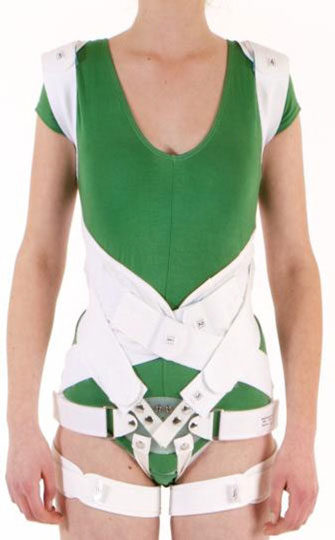Treating Kyphosis
Depending on the patient’s age, the degree of kyphotic curvature and the rate of its progression, various treatment steps can be proposed.
EXERCISES FOR KYPHOSIS
Hyperkyphosis-specific exercises are adapted to the patient’s condition. Their aim is to improve overall posture, to strengthen and stretch certain strategic muscles, as well as to stimulate the neuromuscular system to adopt a corrective movement contrary to the curve so as to positively impact the kyphosis.
When the curvature is not severe enough to warrant another therapeutic strategy, these exercises can be proposed as a standalone treatment. Their aim is to improve muscular balance through posture and to reduce any existing pain.
If the hyperkyphosis is deemed to be progressive and treatment to be inevitable in the short or long term, the exercises may serve to prepare the patient for this next treatment phase.
Exercises for kyphosis are often prescribed as a means of adjunctive treatment to wearing the SpineCor® brace and to chiropractic rehabilitation care as the three act in a complementary fashion.

THE BRACE
An orthopaedic brace will be recommended in cases where the hyperkyphosis exceeds more or less 50°—especially if posture continues to deteriorate.
While there are many types of braces that may be used to treat kyphosis—most of which are made of rigid plastic—the SpineCor® brace, which is not really a brace at all, but rather a system for dynamic rehabilitation using elastic bands, has for several years now presented itself as a leading alternative for the treatment of hyperkyphosis.
To learn more about how the SpineCor® brace works, see The SpineCor® Treatment.



